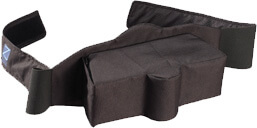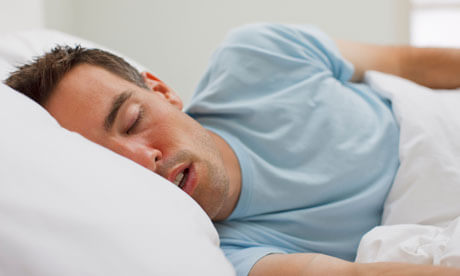 Positional therapy is a concept that many snoring and obstructive sleep apnea suffers have likely never even heard of. It’s a very simple method that can effectively eliminate snoring and in some cases, prevent mild OSA from occurring. This noninvasive technique costs little to nothing to try and is often overlooked by many who bypass this simple solution while seeking more popular methods such as the CPAP machine or oral appliances.
Positional therapy is a concept that many snoring and obstructive sleep apnea suffers have likely never even heard of. It’s a very simple method that can effectively eliminate snoring and in some cases, prevent mild OSA from occurring. This noninvasive technique costs little to nothing to try and is often overlooked by many who bypass this simple solution while seeking more popular methods such as the CPAP machine or oral appliances.
How positional therapy is used to control snoring
Plenty of research suggests that those with sleep apnea have more apneic events while sleeping in the supine position (on the back facing up). It’s also known that snorers often snore the loudest while positioned on their back.
The obvious solution is for suffers to sleep on their side while altogether avoiding sleeping on their back. This is exactly how positional therapy works.
Why does positional therapy work?
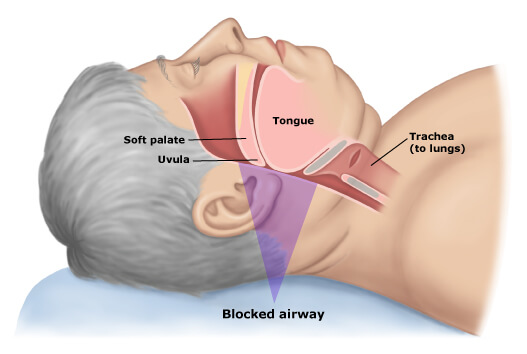 Having a basic understanding of why OSA and snoring occur will help one to understand why positional therapy works.
Having a basic understanding of why OSA and snoring occur will help one to understand why positional therapy works.
While asleep, muscles in the throat and airway tend to relax, the tongue falls to the back of the throat and for some, the airway becomes loose and floppy. These floppy tissues collide with each other while breathing in and out, causing the sound of snoring. In some cases, the airway can become so relaxed that breathing can momentarily cease, causing an apneic event. The effects are often heightened if the individual is overweight, takes sedatives, or consumes alcohol prior to falling asleep.
Sleeping in the side position uses the natural force of gravity to keep the airway clear of obstructions. When laying on one’s side, the tongue muscle along with any excessive fatty neck tissue shifts to the side instead of backward. As a result, the airway is less restricted, breathing becomes easier, and snoring sounds often cease.
How to remain on your side while sleeping
Alright, so we know that positional therapy can be effective but how does one remain on their side while asleep and not roll over onto their back? There are several different devices that can help to overcome this challenge. Some of these suggestions are very inexpensive home remedies while others can be more costly.
Sew tennis balls into your pajamas – Inexpensive and effective
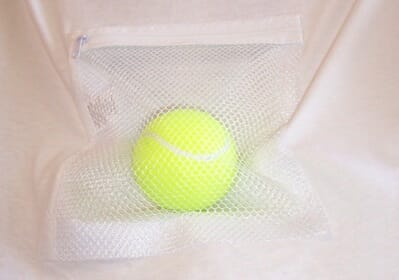 The least expensive solution is to create a homemade device that will make rollover uncomfortable or even physically impossible.
The least expensive solution is to create a homemade device that will make rollover uncomfortable or even physically impossible.
A widely used and inexpensive solution requires only a t-shirt, tennis ball, sock (or mesh bag), and safety pins. Simply place a tennis ball inside of an old sock. Attach the sock along with the tennis ball to the center back of a tight fitting t-shirt or your pajamas.
When you try to roll over in your sleep the tennis ball will poke into your back and make sleeping in this position uncomfortable. The discomfort will likely not cause you to awaken but should be enough to cause you to inadvertently roll back over onto your side. Overweight individuals may want to use a larger size object such as a softball.
This homemade method is an inexpensive way to see if positional therapy will work for you. There are however several products made specifically for positional therapy. These products are often more comfortable to use on a regular basis and just as effective.
Snoring bumper belts & anti-snoring pillows
Once you have established that positional therapy actually works, upgrading to a more comfortable device is always an option. There are a number of similar products that strap around your chest and make rollover physically impossible. Two popular devices are the Rem-A-Tee and the Zzoma belt. These products typically sell for between $150 and $200. Fortunately, some insurance companies will reimburse the expense of such devices if a prescription is written.
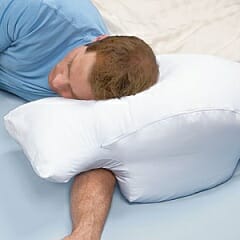 A similar bumper belt device can be fashioned at home by filling a lightweight backpack with foam, bubble wrap or packing peanuts and then securing it to the back before going to sleep. This less expensive method can be just as effective yet created for a fraction of the price.
A similar bumper belt device can be fashioned at home by filling a lightweight backpack with foam, bubble wrap or packing peanuts and then securing it to the back before going to sleep. This less expensive method can be just as effective yet created for a fraction of the price.
Another option is the anti-snoring pillow. The anti-snoring pillow makes side sleeping easier by using a contoured design which creates a comfortable position for the arm to rest in. While it doesn’t actually prevent rollover, it can help to make side sleeping more comfortable. The average selling price is usually around $60.
Sleep position training devices
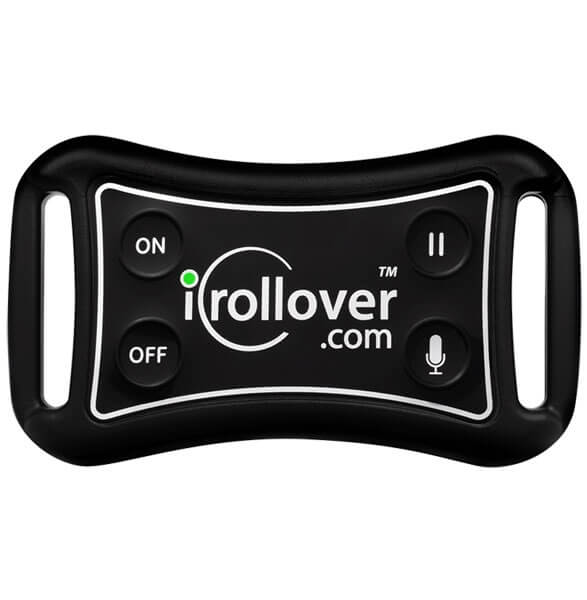
rollover ($178.00 USD)
A new and interesting product that has recently hit the market is the sleep position training device. Perhaps the most popular brand is being sold under by rollover (retails for $178 USD)
This product is a small device that resembles an MP3 player which is attached to a long strap that wraps around the chest. Before using, you or your partner must create a custom message that is up to seven seconds long.
The rollover acts as a positional trainer and serves as an immediate reminder when you begin to roll over onto your back. The device straps around the body and senses whenever you start to roll over. When this occurs, your personalized prerecorded command is transmitted to an earbud telling you to “roll over”. Over time, you retrain yourself to remain on your side throughout the night.
This product is interesting and somewhat a novelty, however, very little clinical research has been conducted to prove its effectiveness.
When positional therapy does not work
 Unfortunately, side sleeping does not work for everyone. It’s estimated that up to 60% of snorers are positional snorers. The other 40% will have to look elsewhere for relief.
Unfortunately, side sleeping does not work for everyone. It’s estimated that up to 60% of snorers are positional snorers. The other 40% will have to look elsewhere for relief.
There are a number of products out there that claim to put an end to your snoring or OSA. Some of these products work while others are simply gimmicks.
Before going any further it’s important to note that one should not treat their snoring if obstructive sleep apnea is suspected. A visit to your doctor is the only way to determine if you have a sleep-related breathing disorders such as sleep apnea. A self-treatment method should not be used if OSA is suspected.
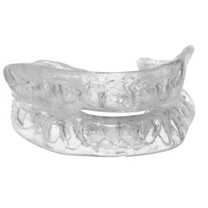
Example of a snoring mouthpiece
A non-OSA snorer who is not a positional snorer may find relief with an over-the-counter mandibular advancement device, also known as a snoring mouthpiece. I have tested out several of these and have used them to eliminate my simple snoring.
There are several methods that can be used to eliminate snoring. Experiment with some of the least expensive methods first, such as the tennis ball shirt. If a basic approach does not help, try another method until an effective solution is found.
Share This Post:
